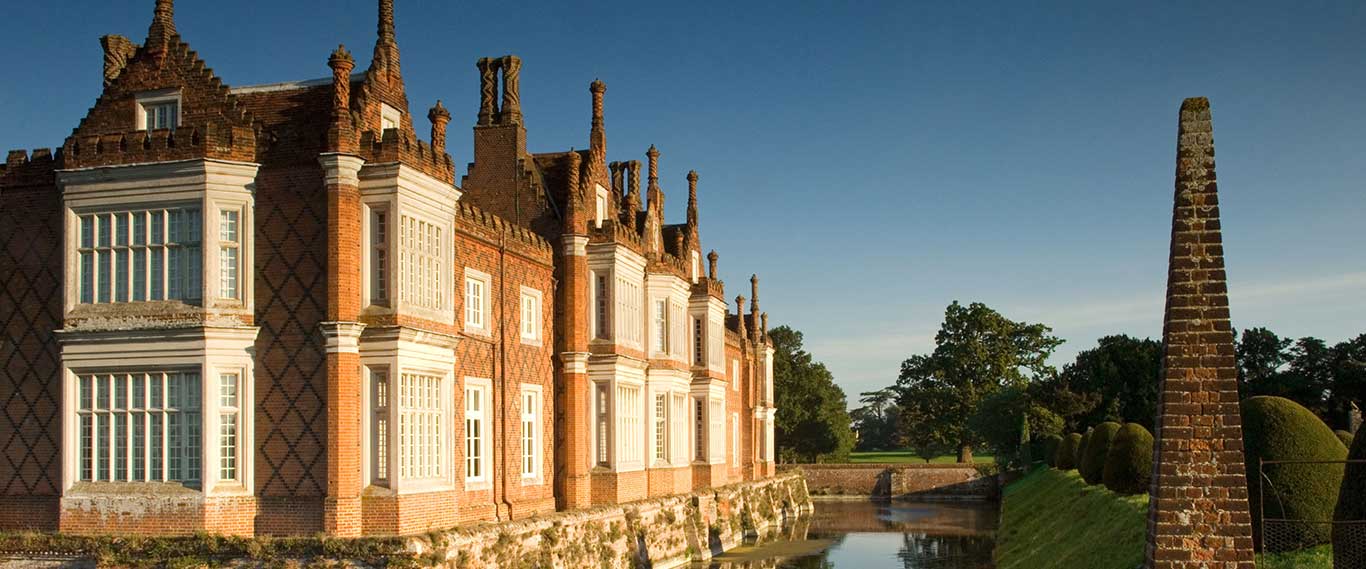When John Tollemache first started work on Helmingham in 1480, it was built in traditional half-timbered style with an overhang to the upper floor both out and inside the courtyard. Since then there have been a number of changes in external appearance, but the basic form of a courtyard manor house still remains, as do many of the original brick chimneys (although all have had to be repaired over the last two centuries!).
In about 1760 a number of exterior changes to Helmingham Hall were made. The Tudor gables, with the exception of those at the corners, were all removed, and the existing half-timbered walls were concealed with the lower walls being covered in brick and the upper ones with tiles. To the casual observer these tiles may appear to be bricks, but they are in fact only about a quarter of an inch thick and are held in place by wooden pegs. The well-known Regency architect John Nash covered the whole exterior of the house with a coating of cement in about 1800, following the instructions of Wilbraham Tollemache, 6th Earl of Dysart, who thought that grey stucco and battlements would make Helmingham look more like a castle – fortunately this stucco was removed in 1821.
The two drawbridges have been pulled up every night since 1510, making Helmingham Hall an island by night, protected by a wide moat that is home to many kinds of fish, including pike – the heaviest of which weighing just over 25 lbs! We like to think that the previous eighteen generations of the family would be pleased to see that their home, built so long ago and protected by its sixty-foot-wide moat, still has its two drawbridges pulled up every night and lowered each morning.


